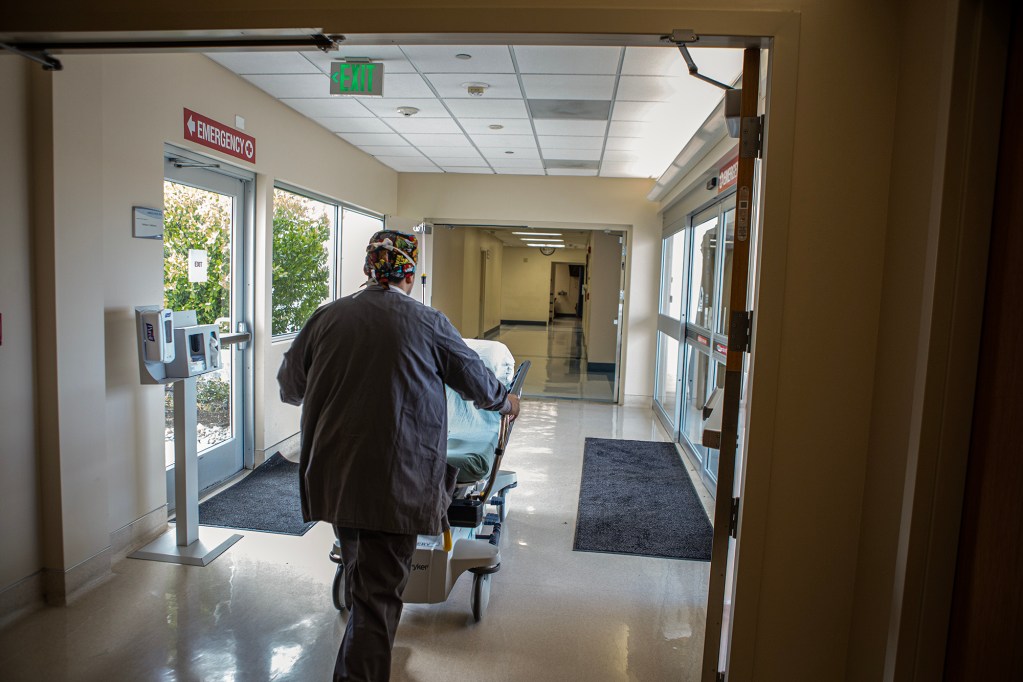In summary
After delays and mishaps, California announces $450 million for high school career pathways.
California is poised today to announce which schools will share a windfall to bolster career paths for students – but delays and mishaps have meant that thousands of students missed the opportunity to participate.
An estimated 300 K-12 schools will share $450 million to set up internships, boost dual-enrollment programs at community colleges and take other steps to connect students to high-paying jobs in health care, technology, the arts and other fields.
The announcement comes after a tumultuous few months for the Golden State Pathways program, which is part of California’s broader effort to bolster career and technical education at high schools and community colleges. Alongside other investments, the program is intended to ultimately make career training available to every student.
Initially created by the Legislature in 2022, the Golden State Pathways Program was supposed to roll out the following year, with schools applying for grants and the state Education Department announcing winners in January 2024.
But in spring 2023, a brewing state budget deficit led some legislators to propose delaying the program and sending the money elsewhere. After protests from school districts and career education advocates, the program survived — then faced more delays when the state pushed back the application deadline.
In May, the Education Department announced that 302 school school districts won grant money, but according to reporting by EdSource, some of those grants were for far different amounts than what the schools had applied for.
In July, the state abruptly revoked the entire roster of grant recipients, saying it needed to review the applications again given that school districts had flooded it with appeals.
“The California Department of Education takes Golden State Pathways, as well as all of California’s investments in workforce-ready educational opportunities, very seriously, and we are committed to ensuring that these funds get to local educational agencies as quickly as possible. We recognize the impact that this (delay) has had on districts, and every effort is underway to ensure that funds are distributed as swiftly as possible,” Elizabeth Sanders, spokesperson for the Education Department, said in an email this week, adding that the agency is working to “ensure that all communication moving forward is clear, responsive, and collaborative.”
School districts and career education advocates were irate. The delay meant they could not move forward with plans for this fall, even though many had already committed to programs. In early September, a group of 20 school districts and nonprofits wrote an urgent letter to state officials, including Gov. Gavin Newsom, imploring them to speed up the process.
“We respectfully ask that you do everything in your power to get promised Golden State Pathways grant dollars flowing, sent, and received to the hundreds of local education agencies that have planned, staffed and set expectations for this funding across California communities,” they wrote. “Time is of the essence for the communities that depend on them.”
The delays were especially painful for districts that have been scrambling to help students recover from the COVID-19 pandemic. Since campuses reopened, they’ve grappled with high levels of chronic absenteeism, lackluster test scores and an uptick in student misbehavior. Many students, meanwhile, have struggled with high levels of anxiety and depression.
Career pathways have offered some hope. Students who participate in them tend to have higher graduation rates, higher rates of college enrollment and higher earnings later in life, according to research compiled by Policy Analysis for California Education, a nonprofit think tank.
By improving career paths for students, the state also hopes to spur its own economy by providing skilled workers for growing industries such as health care, technology and climate-related fields.
Students missing out
But the delays and uncertainty have forced schools and organizations to freeze hiring and planning.
“We’re in a holding pattern and the school year has already begun. We’re missing an opportunity to reach more students and help more school districts with their goals,” said Kirk Anne Taylor, executive director of Climate Action Pathways for Schools, a nonprofit that provides paid internships for high school students to work on environmental projects in their schools and communities.
Porterville Unified in Tulare County is among the districts that risked postponing its career pathways expansion plans. The district was hoping to use Golden State Pathways grant money this year to expand its climate internship program, where students create energy audits of school buildings and recommend ways to save gas and electricity. Over the past three years, the students’ audits have saved the school district more than $830,000 in energy costs. Students have also worked on green schoolyard projects and a switch to electric buses.
Taylor’s organization ended up finding another funding source for Porterville’s program, but other districts weren’t so lucky, she said.
“It’s a great program in Porterville and we’re eager to move forward … there and elsewhere,” Taylor said.
In Los Angeles, a nonprofit called UNITE-LA connects schools with local businesses, setting up internships, job shadowing opportunities, mock interviews, professional speakers and other avenues for students to gain career experience. Due to the delays, plans to expand its programs at dozens of Los Angeles County high schools have been scuttled for a year.
Career education “really has the power to transform students’ lives,” said Carrie Lemmon, UNITE-LA senior vice president of systems change strategy. “So many students are struggling right now. We’re grateful for the grants, but every year we wait to implement these reforms, we’re losing more students.”

